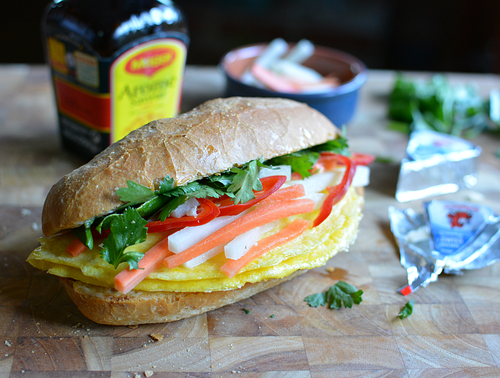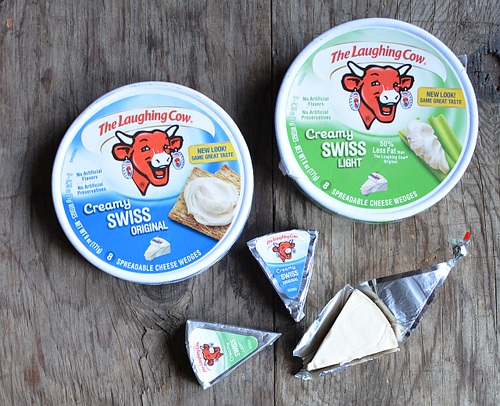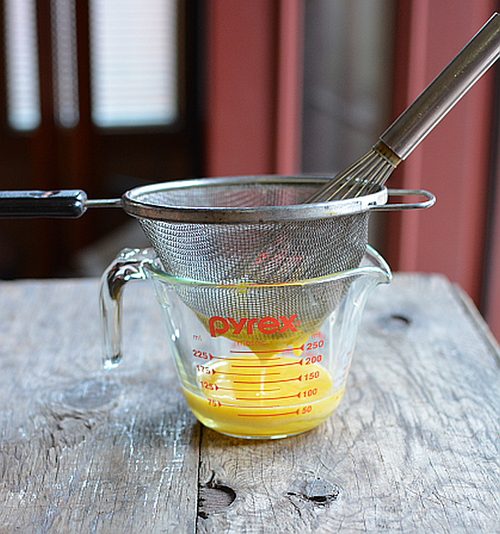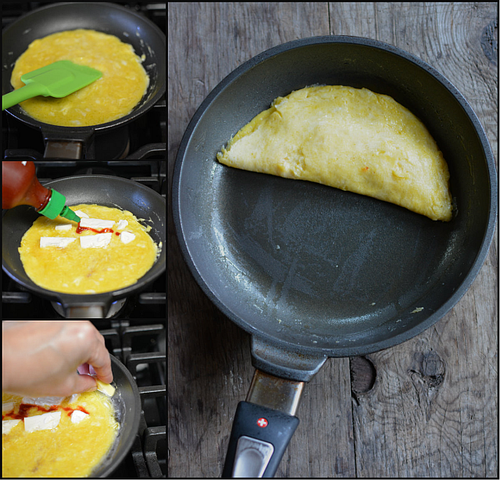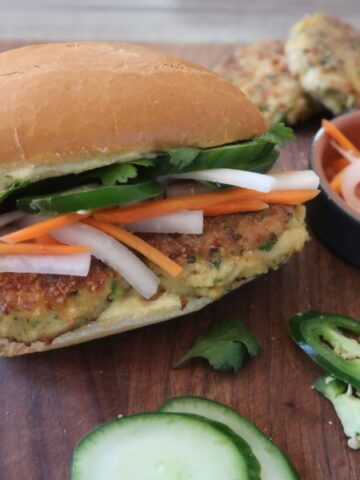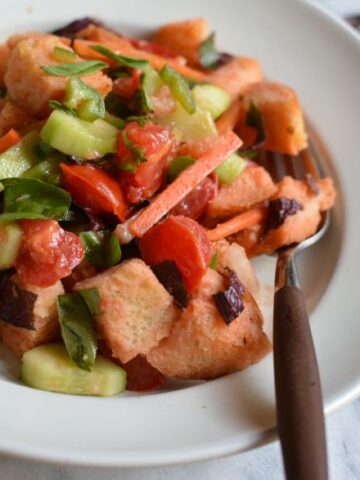The most popular, go-to brand of cheese in Vietnam is Laughing Cow. You see it for sale at markets. It’s often found as part of a banh mi cart offering. If you want cheese on your sandwich, the vendor will likely suggest Laughing Cow – a processed cheese that originated in France in 1865. The cheese keeps well at room temperature and obviously, in Vietnam's tropical humidity too. It is charmingly shaped in a wedge like something a mouse would adore. Each portion is covered in foil with a tiny red tag for you to pull and reveal the spreadable white wedge inside. It’s kind of fun to open one up.
I grew up with La Vache Qui Rit (Laughing Cow in French) and when we came to America, it was the cheese we looked for until we realized that there were many other kinds of cheese to try here. That said, we still bought Laughing Cow, and recently I’ve been purchasing it from Costco and Trader Joe’s. The low-fat Swiss version is commonly found at grocery stores; we came across the slightly creamier full-fat version at a Chinese market last week. Seriously. Asians want full fat Laughing Cow, which registers at 50 calories per wedge; the low-fat one has 35 calories per wedge.
What do I do with Laughing Cow cheese? My husband Rory and I mostly snack on it with rice crackers. But in the past couple of months, I started cooking with it.
Laughing Cow is my comfort cheese from childhood so I decided to put it into an omelet and then make banh mi from it. The omelet idea came from Petit Trois in Los Angeles, where chef Ludo Lefebvre offers a signature omelet filled with Boursin spreadable cheese. Rory and I lunched there with KCRW radio show host and chef Evan Kleiman. We had front row seats at the bar and watched the crew prepare our food. The omelet was prepared with utmost precision and care. The result was delicate and jiggly, stunningly eggy and filled with just the right amount of oozy cheese. A side salad refreshed the palate.
When we left the restaurant, I said to Rory I wanted to try making a Laughing Cow omelet. Along the way, I put in a little sriracha for fun. Then I made banh mi with the omelet. I tried the omelet sandwich out on two tile guys working on our guest bathroom remodel. They gave the sandwich their enthusiastic approval. “That is not just good. That’s tasty good,” Daniel said.
Here it is for you to try. The method is outlined in detail at Bon Appetit. The main points to remember: (1) barely beat the eggs but stir them in the skillet at the beginning; (2) use medium-low to low heat; (3) employ good butter; (4) move the skillet to and from the burner to control the heat; and (5) keep the omelet on the wet/moist side.
The Laughing Cow cheese doesn’t melt as well as the Boursin but it’s what I have at home. Plus, the sriracha goes well with the Laughing Cow. This recipe makes one omelet. When you scale up, strain all the eggs and then use about ⅓ cup (90 ml) for each omelet. I’ve yet to master this omelet technique but it’s fun to practice and eat.
Keep the fold of the omelet as a half moon for a sandwich. When you serve it like at the restaurant, do an envelope-style tri-fold. Omit the chile if the sriracha heat is enough for you.
RECIPE
Laughing Cow Cheese Omelet Banh Mi
Yields: 1 sandwich
Ingredients
- 2 large eggs, at room temperature
- 1 wedge Laughing Cow cheese, full or low-fat
- Fine sea salt
- White pepper
- 1 to 2 generous tablespoons European-style butter, such as Plugra or Bretel
- Sriracha
- Banh mi fixings: Bread, mayonnaise, Maggi Seasoning Sauce, daikon and carrot pickle, chile slices, cucumber or chopped romaine and cilantro
Method
- Position a mesh strainer over a measuring cup or bowl. Crack the eggs into the strainer, then whisk the eggs. Let them fall through the strainer until there is little left; discard the thick stuff that does not pass through the strainer easily. Set aside.
- Cut the Laughing Cow cheese into thin pieces. Put near the stove.
- Heat a small (8-inch / 20 cm) nonstick skillet over medium-low heat. Add half of the butter and let it softly melt. Avoid a sizzle.
- Pour the eggs in the skillet. Immediately slide the skillet to a cool burner and use a silicon spatula to stir the eggs in a figure 8 pattern to gently cook the eggs. When they just start to set – 15 seconds or so, move the skillet back to the burner. Let cook very gently. Lower the heat to avoid browning. Sprinkle in a pinch of salt and white pepper.
- Arrange the cheese bits in the upper half of the omelet. Add a thin row of sriracha across the cheese, if you want extra heat.
- Let cook, adding the remaining butter around the rim of the omelet (use your fingers or the tip of a paring knife to direct the pat of butter) to let it melt to the underside. When the eggs look relatively set (it will look wet and slightly jiggly on top), lift the bottom of the omelet up and over the top to close it up. Off heat, add a tiny pat of butter to the top of the omelet for extra richness and moisten dry spots. Let cool for 1 minute before using to make a banh mi sandwich.













